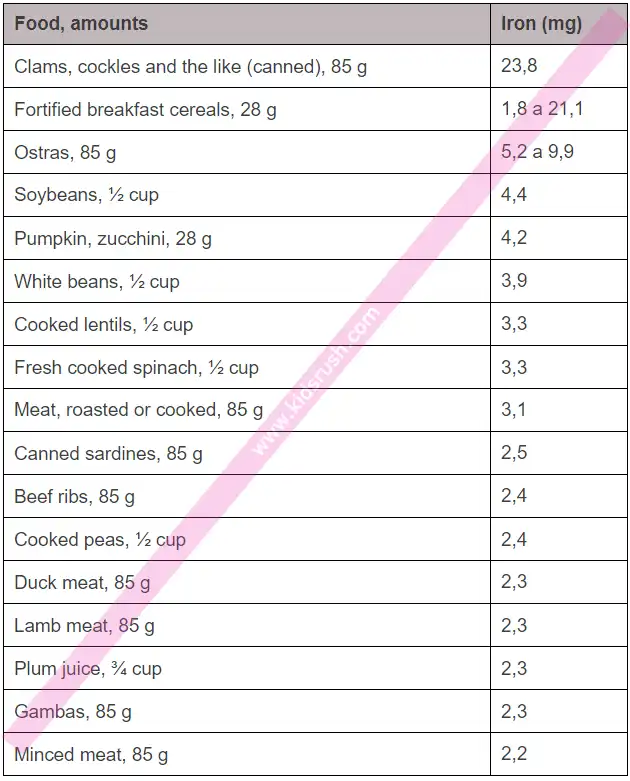Iron deficiency anemia is more common in young children, due to rapid growth and eating few foods with iron.
What is anemia?
We speak of anemia when red blood cells contain less hemoglobin than normal.
Hemoglobin is an essential component for the transport of oxygen throughout the body and for its manufacture, there must be sufficient iron deposits.
Lack of iron (iron deficiency) is one of the most common nutritional deficiencies in the world and is the most common cause of anemia.
In some cases there may be iron deficiency anemia, although the iron intake in the diet is adequate:
- Due to intestinal malabsorption problems.
- Due to repeated bleeding: very heavy menstruation, very frequent nosebleeds, digestive blood loss, etc.
- In times of rapid growth, such as in childhood and adolescence.
It is important to bear in mind that the hemoglobin figure that we consider normal in an analysis varies according to age, it is also different depending on whether it is a boy or a girl.
Discover: Hearing Impairment (Hearing Loss) In Children
What are the symptoms of anemia?
In most children, anemia is mild, so, commonly, they do not have symptoms.
There may be paleness, fatigue, irritability, lack of appetite or craving for products that are not food (such as dirt), delayed development or learning and increased heart rate.
How is iron-deficiency anemia diagnosed?
If a child has the above symptoms, the pediatrician should be consulted. The professional will assess whether it is necessary to perform a blood test to determine the hemoglobin level, the characteristics of the red blood cells, and the status of the iron deposits.
Read Also: Home Remedies For Chickenpox
And how iron deficiency anemia can be prevented?
A balanced diet gives the child the amounts of iron he demands.
The foods that contain the most iron are meats, some shellfish, vegetables, and legumes.
Table of iron content in food
You must try to follow some dietary recommendations, to ensure that the child’s diet contains sufficient iron intake.
- It is recommended to eat red meat (beef, lamb, pork …) 2-3 times a week. Some mollusks (such as clams and cockles) are also very rich in iron. Organ meats (such as liver) are very rich in iron but are not appropriate due to their significant fat content.
- Although cow’s milk is good food, it is not advisable to abuse dairy products, as they hinder the absorption of iron.
- The iron found in plant-based foods, such as cereals and legumes, is absorbed worse (lentils are famous for being rich in iron), but they must be present in the diet and form part of a balanced diet.
Read Also: Causes Of Memory Loss In Children
How iron deficiency anemia treated in children?
Treatment consists of iron supplements in the form of drops, drinkable ampoules, or tablets. It is important to take medicinal iron preferably on an empty stomach, with water or natural orange juice, not with milk. A good time would be when you get up, half an hour before breakfast, but if you usually have milk for breakfast, you can also drink it before your snack.
Iron treatment sometimes causes digestive discomfort, such as tummy pain or nausea. In these cases, symptoms may improve by taking iron with food and not on an empty stomach. It is normal for stool color and consistency to change when you are taking iron.
The pediatrician will assess the convenience of performing analytical controls to assess the response to treatment. In addition to medical treatment, it is essential to guarantee a correct supply of iron in the usual diet, so that the child does not have anemia again in the future.

